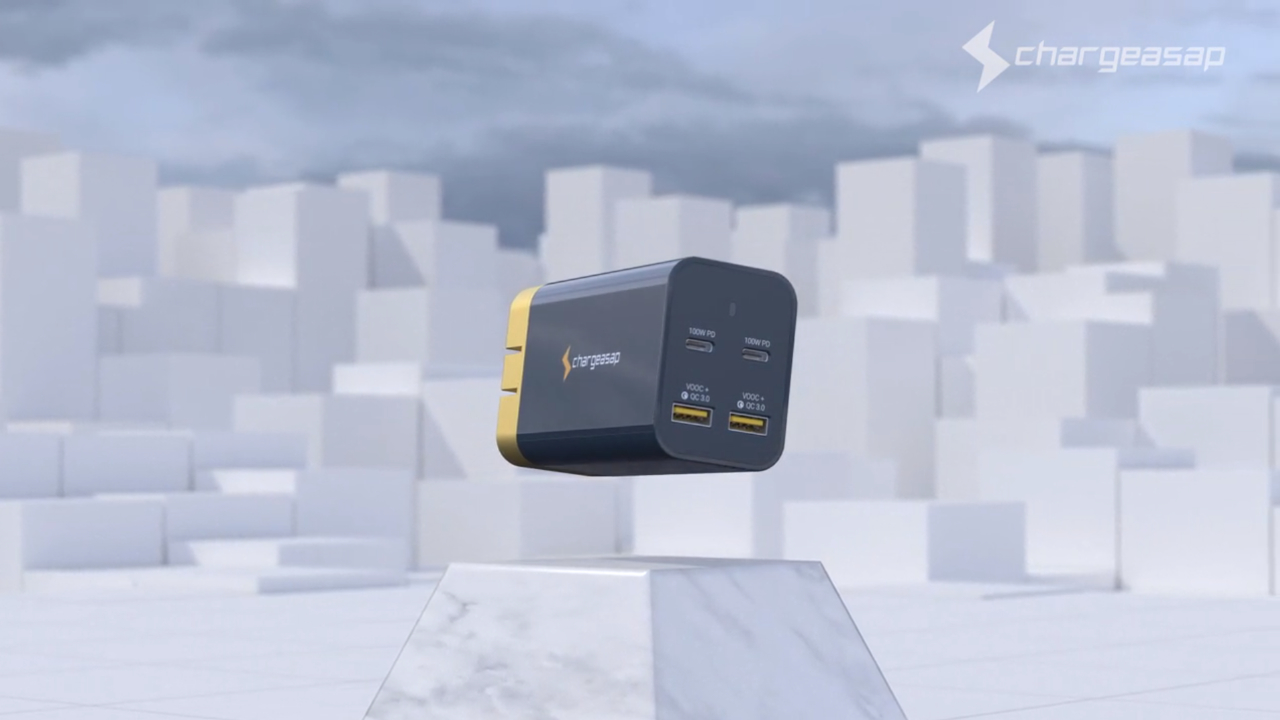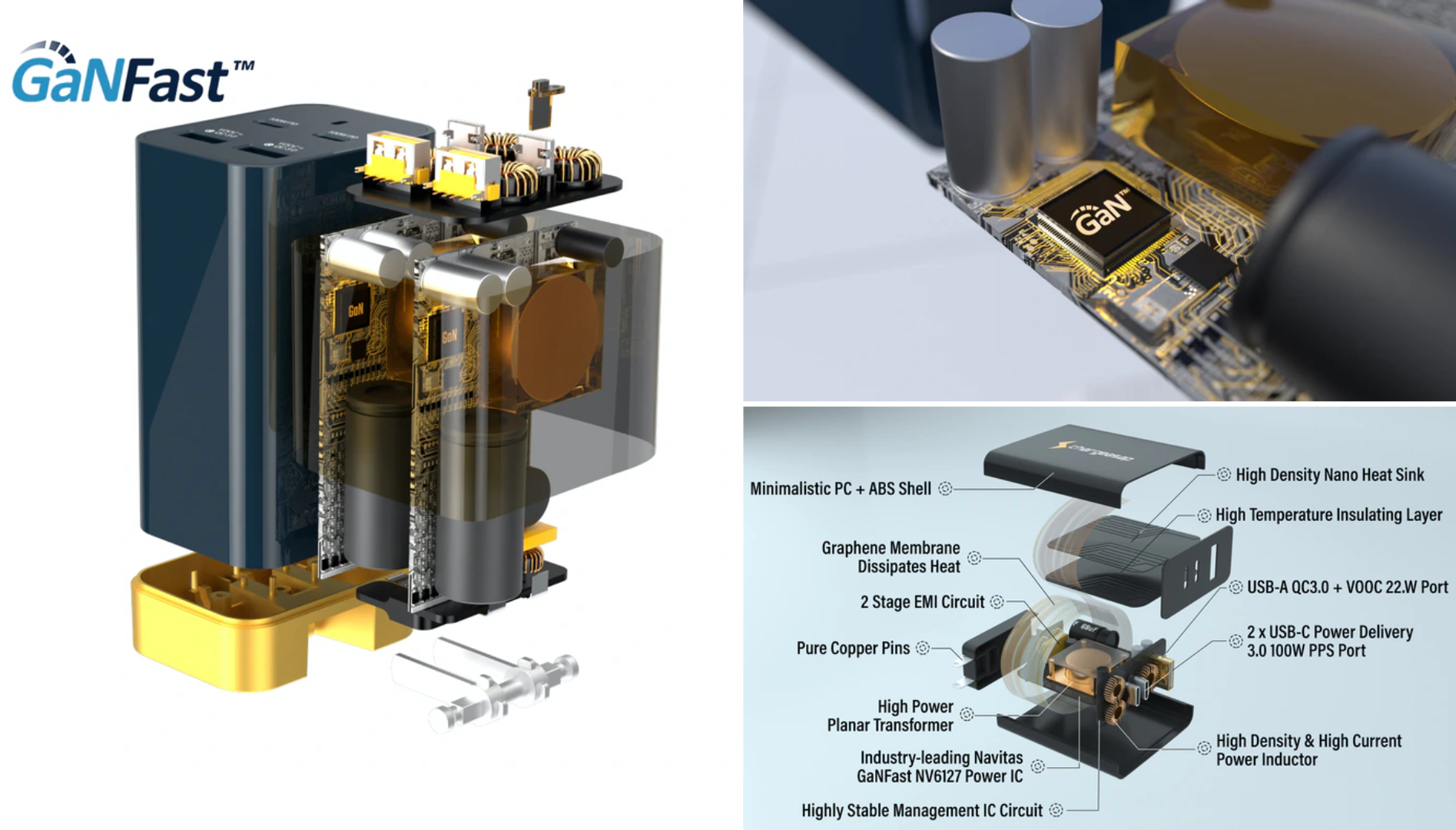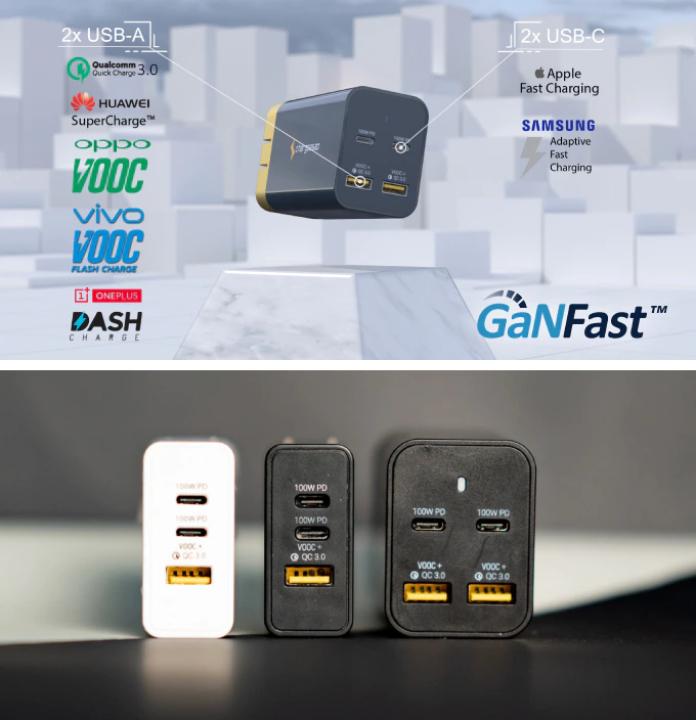Bottom line: Chargeasap wants the portable Omega power brick to be the only accessory that consumers rely on for charging all their devices. The credit card-sized charger comes in two variants: 100W ($45) and 200W ($75), with the latter able to charge two Macbook Pros simultaneously via its 2 x 100W USB-C ports. It also features a graphene membrane and a high-density nano heat sink, which according to Chargeasap, combine to offer superior heat dissipation and efficiency than traditional chargers. The company launched a 60-day campaign on Kickstarter last week, where it quickly managed to surpass the Omega's $10,000 funding goal, meaning that backers/early birds would likely start receiving their chargers on schedule in January next year.

Chargeasap claims that its pocketable Omega USB-C wall adapter is the world's first and smallest 200W Gallium Nitride (GaN) charger. The Sydney-based tech startup sells a variety of crowdfunded charging accessories (magnetic cables, power banks, chargers) and is pitching the Omega as the perfect portable charger for work, home and travel.
Instead of silicon, Chargeasap utilizes gallium nitride (GaN) semiconductor technology from Navitas inside the Omega, which it says enables the charger to output 200W of power with minimal heat and maximum efficiency in a small footprint. As a result, the charger's 2 x USB-C Power Delivery 3.0 ports can each output 100W to charge two laptops simultaneously, alongside the 2 x USB-A ports that are compatible with a variety of fast charging protocols from Apple, Samsung, Qualcomm, OnePlus and Huawei.

With four devices connected, the Omega's 200W output is split into 65W for both USB-C ports and 22.5W on the Type-A ports. Thermals are kept in check by a graphene membrane ribbon sheet that wraps around the Omega's circuitry, alongside a high-density nano heat sink that the company says keeps it well below the industry standard for max charging temps.
Chargeasap also draws attention to the Omega's value for money proposition that saves consumers from buying a separate adapter for each of their devices. Although it may not appeal to those already using out of the box chargers, the convenience of having to use just one power brick for charging four devices at once is still there.

The Omega 200W comes with 2-way foldable prongs that can be adjusted at 90°/180° for better usability. It also has a smaller 100W variant that can deliver max output through either one of its USB-C ports and features a single 22.5W USB-A port. With three devices connected, it sends 65W to one USB-C port and 12W each to the other remaining ports.
Both Omega models support 100V-240V worldwide universal voltage and come with three plug converters (AU/EU/UK) to take care of compatibility issues. Considering that Chargeasap has gone well past the charger's original funding goal with over 50 days more to go, expect its thousands of backers to start charging with their Omegas early next year.
https://www.techspot.com/news/86412-chargeasap-crowdfunded-200w-gan-usb-c-power-brick.html